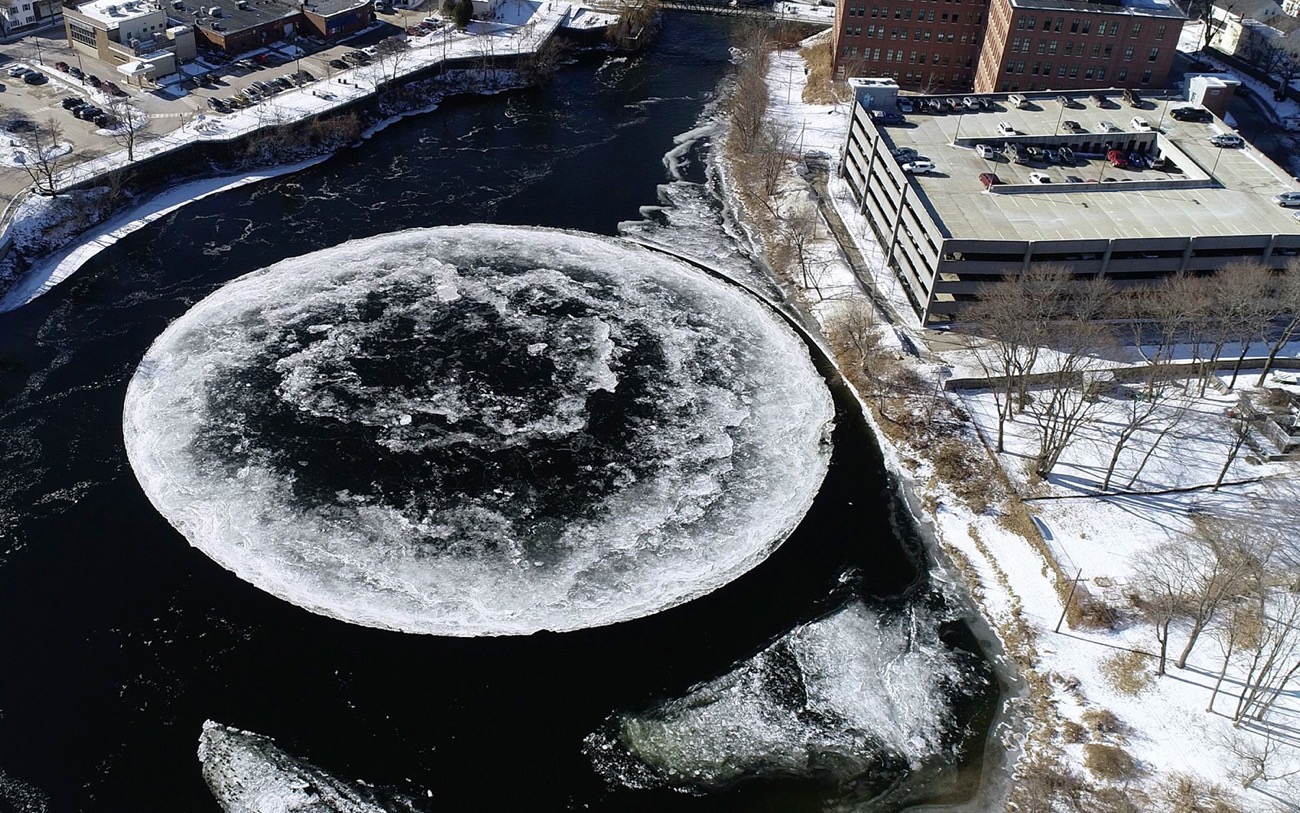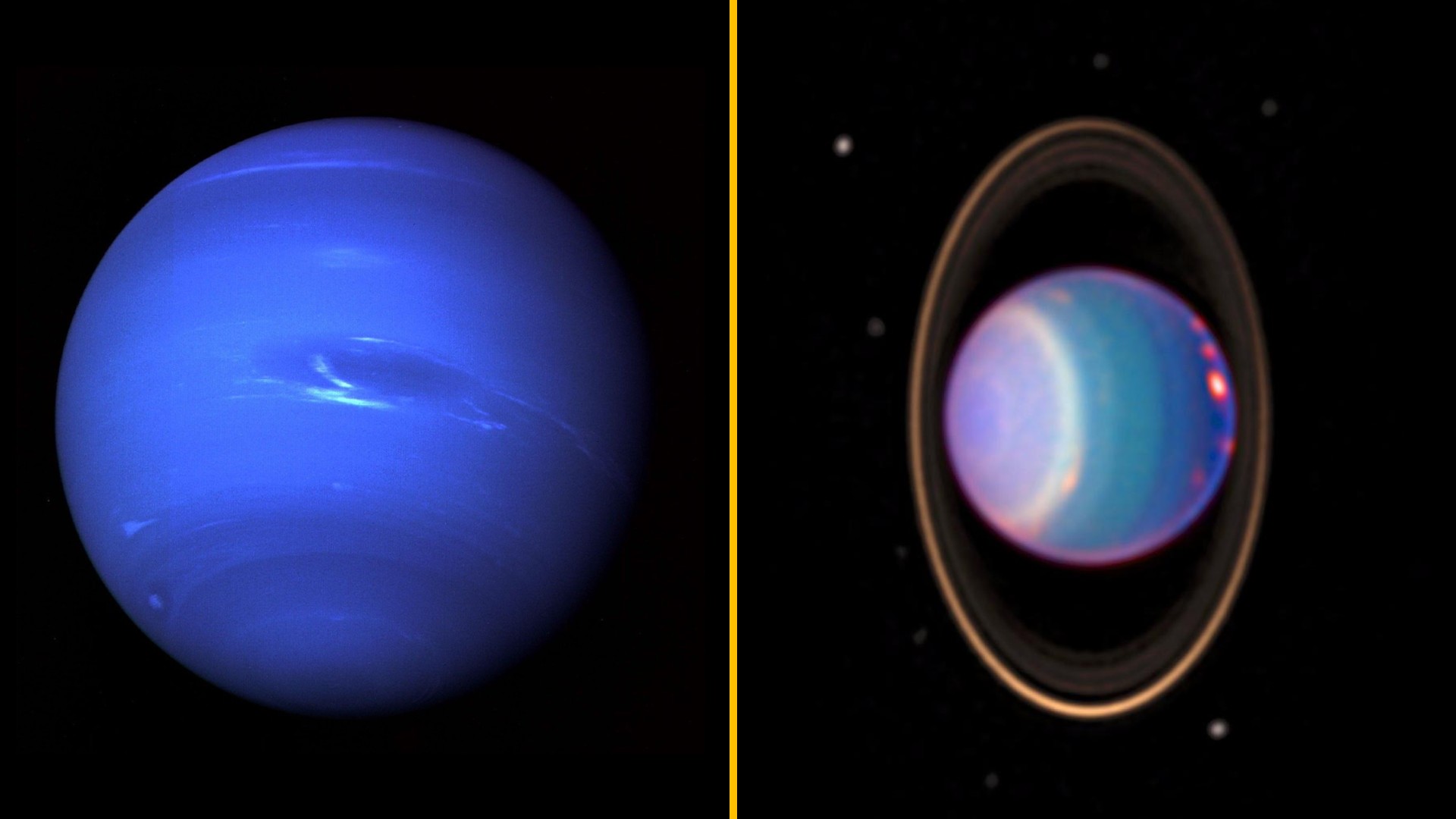Giant, Spinning Disk of Ice Looks Like Alien Creation. Here's How It Formed.

Its appearance has been likened to a moon, an alien creation, a crop circle and a giant Lazy Susan; regardless, a sprawling disk of ice spinning in the Presumpscot River in Westbrook, Maine, has people talking.
According to news reports, the disk extends up to 330 feet (100 meters) across and is spinning in a counterclockwise direction. (Ducks seen taking a spin spurred the analogy to a duck-go-round.)
A drone video shows the gorgeous ice formation in all its glory, slowly rotating in what looks to be a slight bend in the river, with small eddies rolling by in the narrow passage not crowded out by the disk. [7 Crazy Things That Happen Only When It's Really Cold]
"It looks like the moon has landed in Westbrook!" the city posted on its Facebook page.
Though not unheard of, the wintry treat is "unusual," said Ted Scambos, senior research scientist at the National Snow and Ice Data Center at the University of Colorado-Boulder.
"I think you can see how it is formed — that side of the river has a large eddy in the water current that traps the ice," Scambos told Live Science. "Because of the rotation, and probably occasional bumping into the shoreline — and the fact that the ice is freezing into a solid plate, the ice that gathered in the eddy was trapped and worked into a giant disk."
As for why the huge pancake of ice appears so perfectly circular, Scambos said that has to do with the size of the ice inside.
Get the world’s most fascinating discoveries delivered straight to your inbox.
"If it were just loose pieces of ice, the ice would just trace the shape of the eddy (which is probably less circular, more oval or egg-shaped)," Scambos said. "However, as it slowly froze into a solid plate, and since pieces of ice are probably being added from upstream, it slowly grew into a perfectly circular disk."
A similar, though smaller, paddy of ice formed in the Sheyenne River in North Dakota in November 2013, Live Science previously reported. That rotating disk was also driven by an eddy in the river. And, in 1993, scientists from MIT suggested eddies were responsible for similarly spinning, yet much smaller, ice disks, Live Science reported.
"I have not personally [seen an ice disk like this], but these are seen occasionally in the right conditions, usually at a bend in a river where eddies are common," Walt Meier, senior research scientist at the National Snow and Ice Data Center, told Live Science.
Presumpscot has likely hosted such a formation in its past.
"I would bet that this is not the first time in history this has been observed there, unless the shape of the river bank was recently changed in a significant way," Scambos said of the Westbrook ice.
With snow forecast for this weekend, could the giant grow even larger? We shall see.
- Images of Melt: Earth's Vanishing Ice
- Collapsing Beauty: Image of Antarctica's Larsen Ice Shelf
- On Ice: Stunning Images of Canadian Arctic
Originally published on Live Science.
Jeanna Bryner is managing editor of Scientific American. Previously she was editor in chief of Live Science and, prior to that, an editor at Scholastic's Science World magazine. Bryner has an English degree from Salisbury University, a master's degree in biogeochemistry and environmental sciences from the University of Maryland and a graduate science journalism degree from New York University. She has worked as a biologist in Florida, where she monitored wetlands and did field surveys for endangered species, including the gorgeous Florida Scrub Jay. She also received an ocean sciences journalism fellowship from the Woods Hole Oceanographic Institution. She is a firm believer that science is for everyone and that just about everything can be viewed through the lens of science.


